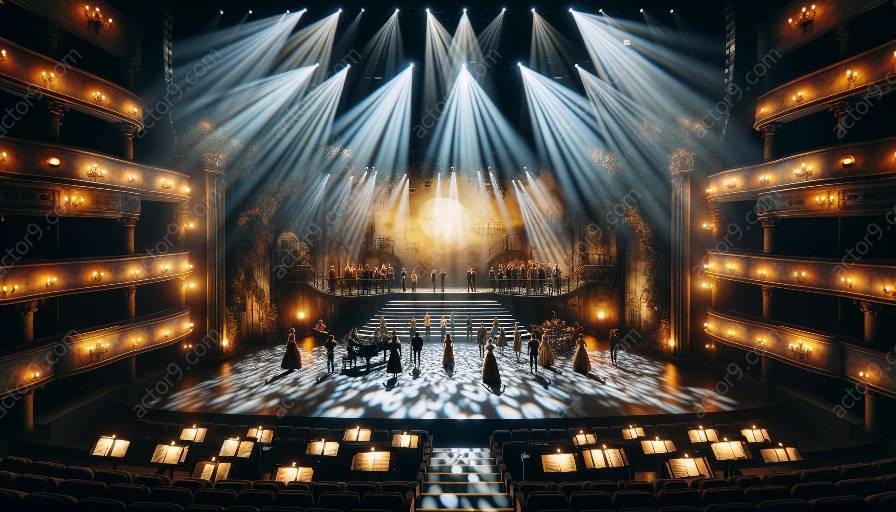Lighting design in musical theatre is a critical aspect of creating memorable and impactful performances. As productions scale up in size and complexity, the design of lighting must also adapt and evolve to meet the unique demands of each production. In this topic cluster, we will explore the scaling of lighting design, from basic principles to advanced techniques, and how it relates to the world of musical theatre.
Basic Concepts of Lighting Design
Understanding the Foundations
At its core, lighting design is about creating the right atmosphere, setting the mood, and guiding the audience's attention. The basic concepts of lighting design include principles such as color temperature, intensity, distribution, and direction.
Adapting to Different Stages
One key aspect of scaling lighting design is the ability to adapt to different stages. From small, intimate venues to large, grand theatres, the design must be flexible enough to enhance the performance regardless of the size and layout of the stage.
Intermediate Techniques
Layering of Lights
As productions grow in scale, the layering of lights becomes essential. By creating different layers of illumination, lighting designers can add depth, dimension, and focus to the stage, enhancing the visual impact of the performance.
Embracing Technology
With technological advancements, lighting design has evolved to incorporate advanced tools such as intelligent lighting fixtures, LED technology, and interactive control systems. Understanding and utilizing these technologies are vital as productions scale up.
Advanced Adaptation
Designing for Versatility
At the highest level of scaling, lighting design must adapt to the versatility of musical theatre productions. This includes designing for quick changes, multiple scenes, complex choreography, and dynamic transitions, all while ensuring seamless execution.
Maximizing Impact
As musical theatre productions aim for larger audiences and grander stages, the challenge for lighting designers is to maximize impact without detracting from the artistic vision. Understanding the spatial and visual dynamics of large venues is crucial for achieving this balance.
Case Studies and Industry Insights
Real-Life Examples
Exploring case studies of successful lighting designs in musical theatre, we will analyze how scaling played a crucial role in elevating the overall production value and audience experience. These insights will provide practical knowledge for aspiring and professional lighting designers in the industry.
Expert Interviews
Hearing from experienced lighting designers and industry professionals, we will gain valuable perspectives on the challenges and strategies of scaling lighting design in musical theatre. Their insights will offer unique insights and best practices for overcoming the complexities of large-scale productions.
Conclusion
Embracing the Challenges
Scaling of lighting design in musical theatre is a dynamic and intricate process that requires creative adaptation and technical expertise. Understanding the foundational concepts, mastering intermediate techniques, and embracing advanced adaptation are essential for achieving excellence in lighting design as productions scale up. By delving into this topic cluster, aspiring and seasoned lighting designers can gain valuable knowledge and inspiration to create impactful and unforgettable experiences on the grand stage of musical theatre.




































